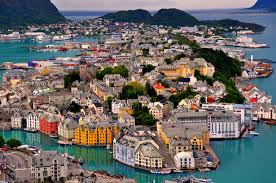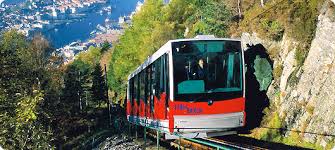
Synthesis of Arecoline - 3 Steps from Nicotinic Acid
**Caution! Iodomethane is a probable carcinogen and is highly volatile!**
**Caution! Arecoline is a possible carcinogen and is biologically active!**
Arecoline is an alkaloid natural product found in the fruit of the Areca palm, Areca catechu. The fruit, known colloquially as betel nuts, is used recreationally in various Pacific and Asian cultures for its mild stimulant properties, and is also used in Ayurvedic medicine and traditional Chinese medicine. Arecoline is a muscarinic acetylcholine M1 and M2 receptor agonist, and has generated moderate interest in academic research for use in Alzheimer's and other neurodegenerative conditions, though its application is hindered by the compound's reported carcinogenicity (see Wikipedia). Additionally, the strucuture-activity relationship of arecoline analogues is of continued interest in medicinal chemistry.[1, 2, 3] While arecoline itself is commercially available and relatively inexpensive, its synthesis is presented here as an 'intermediate' level synthesis, and an extremely brief 'total synthesis'. This route utilizes a Fischer esterification,[4] N-methylation and semi-reduction using in situ generated sodium triacetoxyborohydride.[5] Arecoline hydrobromide was obtained 11% overall yield starting from nicotinic acid - no attempt was made to optimize yield.

Discussion
The Fischer esterification of nicotinic acid proceeds in good yield provided sufficient sulfuric acid is present, and provided the reaction is allowed to run long enough. N-methylation proceeded uneventfully in excellent yield. Though literature preparation of N-methyl pyridinium salts generally call for toluene and/or heating, this reaction was found to proceed in acetone at room temperature overnight. The subsequent semi-reduction of this methylpyridinium salt to the tetrahydropyrdine has also been reported using sodium borohydride in biphasic benzene/water [6](lit. 42%), though the purported yield with sodium triacetoxyborohydride is higher (lit. 67%). Sodium triacetoxyborohydride is a mild reducing agent, and will selectively reduce iminium species and aldehydes. Note that the pyridinium species produced here could be considered an "ene-iminium" ion - upon reduction of the first iminium, the enamine can tautomerize to the iminium and undergo reduction. Sodium borohydride is not expected to provide this selectivity, and is more likely to give methyl 1-methylpiperidine-3-carboxylate as a by-product. The crude 1H-NMR of the triacetoxyborohydride reduction indicated good conversion to product, but fractional crystallization of the product as the hydrobromide salt proved difficult. Modification of this purification step would likely improve yield dramatically. It is uncertain whether the hydrochloride salt is comparable to the hydrobromide produced here. On a small scale (<1g), this reduction proceeded in >50% isolated yield.


Experimental
Methyl Nicotinate
Nicotinic acid (25g, 203mmol) was suspended in methanol (75ml) and sulfuric acid (30ml) was added cautiously over ~1 hr. The now homogeneous mixture was refluxed for 2 hrs, cooled to room temperature, poured into chipped ice and basified to pH >10 with solid potassium carbonate (**Caution! A large amount of CO2 is evolved**). The basic solution was extracted with ethyl acetate (3x 75ml), and the combined organic phase was dried over magnesium sulfate, filtered and concentrated to give methyl nicotinate as a lightly colored oil which solidified upon standing (20.40g, 73%).
3-(methoxycarbonyl)-1-methylpyridinium iodide
Methyl nicotinate (20.40g, 149mmol) was dissolved in acetone (200ml), the solution was cooled to 0ºC and iodomethane (28ml, 447mmol) was added with stirring (no exotherm observed). The reaction vessel was wrapped in aluminum foil, andthe reaction was allowed to warm to room temperature and stand overnight. The thick suspension was filtered, rinsed with acetone, and dried in vacuo to give the title compound as a light yellow, hygroscopic solid (37.57g, 91%). This material was used without purification, but may be recrystallized from ethanol.
Methyl 1-methyl-1,2,5,6-tetrahydropyridine-3-carboxylate hydrobromide
3-(Methoxycarbonyl)-1-methylpyridinium iodide (37.57g, 135mmol) was dissolved in a mixture of methanol (150ml) and glacial acetic acid (80ml) and cooled to 0ºC. Sodium borohydride (10.21g, 270mmol) was added in portions over ~1 hr (**Caution! A large amount of H2 is evolved! Hydrogen is extremely flammable!**) The reaction mixture was an intense orange color (see below). The mixture was stirred for 3hrs, then quenched with water (50ml), washed with diethyl ether (2x 75ml), basified to pH >10 with solid NaOH while cooling in an ice bath, and extracted with DCM (3x 100ml). The combined DCM extract was dried over MgSO4, filtered and concetrated to give 17.65g of a red oil (84% crude, see NMR below). This oil was dissolved in water (ca. 100ml) and acidified to pH ~4 with hydrobromic acid. The water was evaporated in vacuo to give a red-brown foam. The residue was dissolved in hot ethanol, and diethyl ether added to induce crystallization. Only one crop of crystals could be obtained, which was recrystallized from ethanol/ether to give the title compound as a light yellow crystalline solid. Structure was confirmed by NMR and melting point (4.97g, 16%. MP 167-172ºC).
Spectra
1H-NMR crude free base (CDCl3)

1H-NMR Purified Hydrobromide (D2O)

13C-NMR Purified Hydrobromide (D2O)

13C-NMR v. DEPT-135 Purified Hydrobromide (D2O)

References
1. Arkivoc 2009 (ix) 45-56.
2. Eur J Med Chem. 2009, 44(12):4848-54.
3. Eur. J. Pharmacol (1987), 134(1), 61-67
4. J. Am. Chem. Soc. (1951) 73, 5614
5. Chin. J. Pharmaceuticals (Zhongguo Yiyao Gongye Zazhi) 2004, 35(5) 265.
6. Khimiko-Farmatsevticheskii Zhurnal, Vol, 10, No, 11, pp. 90–91, November, 1976.
 DRUG APPROVALS BY DR ANTHONY MELVIN CRASTO
DRUG APPROVALS BY DR ANTHONY MELVIN CRASTO

 amcrasto@gmail.com
amcrasto@gmail.com
 DRUG APPROVALS BY DR ANTHONY MELVIN CRASTO
DRUG APPROVALS BY DR ANTHONY MELVIN CRASTO
 amcrasto@gmail.com
amcrasto@gmail.com
 DRUG APPROVALS BY DR ANTHONY MELVIN CRASTO
DRUG APPROVALS BY DR ANTHONY MELVIN CRASTO
NORWAY\







 Norway: Oslo to Bergen by train
Norway: Oslo to Bergen by train


ALESUND
 Stave church Heddal, Norway
Stave church Heddal, Norway

Norway Bergen Tramway

At the top of Preikestolen with view over the Lysefjord, Norway
 Norway - Bergen Cityscape by AgiVega
Norway - Bergen Cityscape by AgiVega


